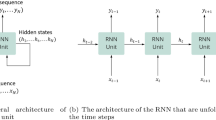Abstract
A parallel algorithm for solving meeting schedule problems is presented in this paper where the problem is NP-complete. The proposed system is composed of two maximum neural networks which interact with each other. One is an M × S neural network to assign meetings to available time slots on a timetable where M andS are the number of meetings and the number of time slots, respectively. The other is an M × P neural network to assign persons to the meetings where P is the number of persons. The simulation results show that the state of the system always converges to one of the solutions. Our empirical study shows that the solution quality of the proposed algorithm does not degrade with the problem size.
Similar content being viewed by others
References
M.R. Garey and D.S. Johnson, Computers and Intractability: A Guide to the Theory of NP-Completeness, Freeman: San Francisco, CA, 1979.
J. Hopfield and D. Tank, “Neural computation of decisions in optimization problems,” Biol. Cybern., vol. 52, pp. 141–152, 1985.
K.C. Lee and Y. Takefuji, “A generalized maximum neural network for the module orientation problem,” Int. J. Electronics, vol. 72,no. 3, pp. 331–335, 1992.
K.C. Lee, N. Funabiki, and Y. Takefuji, “A parallel improvement algorithm for bipartite subgraph problem,” IEEE Trans. on Neural Networks, vol. 3,no. 1, pp. 139–145, 1992.
S. Sen and E.H. Durfee, “A formal study of distributed meeting scheduling: Preliminary results,” SIGOIS Bulletin, vol. 12,nos. 2/3, pp. 55–68, 1991.
K. Sugihara, T. Kikuno, and N. Yoshida, “A meeting scheduler for office automation,” IEEE Trans. on Software Engineering, vol. 15,no. 10, pp. 1141–1146, 1989.
H. Szu, “Fast TSP algorithm based on binary neuron output and analog input using the zero-diagonal interconnect matrix and necessary and sufficient constraints of the permutation matrix,” in Proc. of the International Conference on Neural Networks, IEEE: Piscataway, NJ, 1988, vol. II, pp. 59–266.
Y. Takefuji, Neural Network Parallel Computing, Kluwer Academic Publishers: Norwell, MA, 1992.
Y. Takefuji and K.C. Lee, “A parallel algorithm for tiling problems,” IEEE Trans. on Neural Networks, vol. 1,no. 1, pp. 143–145, 1990.
Y. Takefuji and K.C. Lee, “Artificial neural networks for four-coloring map problem and k-colorability problems,” IEEE Trans. on Circuits Sys., vol. 38,no. 3, pp. 326–333, 1991.
S.L. Teger, “Factor impacting the evolution of office automation,” Proc. IEEE, vol. 71,no. 4, pp. 503–511, 1983.
K. Tsuchiya and Y. Takefuji, “A neural network algorithm for the no-three-in-line problem,” Neurocomputing, vol. 8, pp. 43–49, 1995.
K. Tsuchiya, S. Bharitkar, and Y. Takefuji, “A neural network approach to facility layout problems,” to appear in European Journal of Operational Research.
Author information
Authors and Affiliations
Rights and permissions
About this article
Cite this article
Tsuchiya, K., Takefuji, Y. A Neural Network Parallel Algorithm for Meeting Schedule Problems. Applied Intelligence 7, 205–213 (1997). https://doi.org/10.1023/A:1008220515122
Issue Date:
DOI: https://doi.org/10.1023/A:1008220515122




